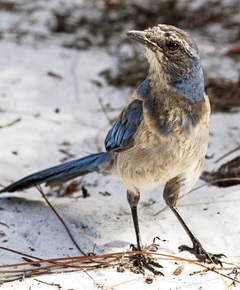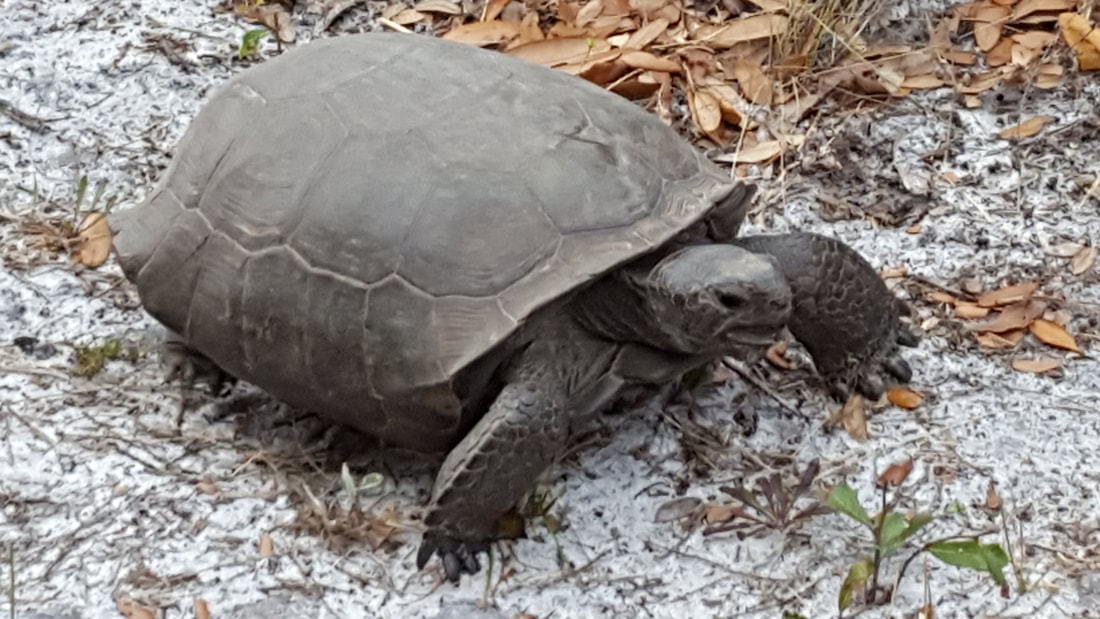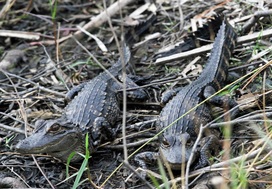Nature & HistoryCheck out the amazing flyover video through the park by Alan Nyiri on our home page!
The Savannas comprises six natural communities: pine flatwoods, wet prairie, basin marsh, marsh lake, sand pine scrub, and scrubby flatwoods. Each community is characterized by a distinct population of plants and animals that are naturally associated with each other and their physical environment. Of particular interest is the sand pine scrub, a globally-imperiled plant community covering the eastern boundary of the park. It is dominated by sand pines and is home to the Florida scrub-jay and gopher tortoise. Rare plant species, like the prickly apple cactus, Lakela's mint, and four-petal paw paw dot the landscape. The basin marsh covers nearly 1,000 acres. The landscape changes dramatically with the rainfall, as does the wildlife that lives here. The deeper marsh lakes provide habitat for large-mouth bass, alligators, waterfowl, and bald eagles. Archaeological evidence suggests native occupation of the area approximately 7,000 years ago. These native peoples, known as the Ais, inhabited the Atlantic Ridge, relying on the rich fauna and flora of the nearby Indian River Lagoon. During the Second Seminole War (1834-1842), Lt. Colonel Benjamin Pierce first used the term "savannah" to describe a series of ponds and marshes found here. In 1879, Captain Thomas Richards planted the first pineapples, grown from cuttings he transported from Key West. The plants thrived in the sandy, well-drained soils and dozens of plantations appeared along the Atlantic Ridge. African Americans and Bahamians provided plantation labor, working the fields in extremely uncomfortable conditions. From 1895 to 1920, Jensen Beach was known as the "Pineapple Capital of the World." |







